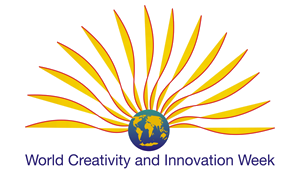Stanford Crash Course on Creativity – Mastering a Creative Mindset – Week 8 – and Review
Pithy statements about innovation
- If anything can go wrong, fix it!
- Abandon paths so success can follow (leave behind what is no longer working, stick with your strengths)
- Every failure reveals a truth about the world
- Unexpected results are often the most interesting because they bring forward unexpected and possibly breakthrough findings
Successful innovations result from
- trying many different approaches to solving the right problem
- throwing away ideas that aren’t working
- keeping what works
Innovation mirrors Darwin’s explanation of evolution – nature created many living experiments, those that succeeded survived. That’s the same approach for innovation – create many ideas, opportunities, iterations and stick with the one’s that work.
Master innovators appreciate unexpected outcomes and leverage them for what they are worth.
People’s Mindsets for Challenge:
- Fear of Failure (FOF)- people who are unwilling to take on challenges/projects that may not turn out well.
- Fear of Missing Opportunity (FOMO)- people who are unwilling to miss out on the challenge/project succeeding.
- FOF+FOMO – people who struggle between these two poles: success and opportunity
How to succeed in risking doing something new?
Take small steps to build your confidence that a problem can be solved. Then larger ones… you get the picture, so that your fear of failure is eventually overcome by your curiosity for success.
Class resources
Treat Life as an Experiment by IDEO’s Tom Kelley
Life Lessons through Tinkering (nothing works out as planned, ever) Gever Tulley (clever successes or joyful failures)
My review of the program
I sat through the Crash Course on Creativity because It’s a great intro for people who are new to the field of creativity and innovation. The focus was to awaken people to these concepts and ideas
- Look at the world more closely
- Connect things in new ways
- Challenge assumptions
- Provide a simple tool to engage in challenges and not avoid them
- Build teams and optimize environments for innovation and experimentation
- Creativity is an endless natural resource
- Every problem you face is an opportunity for a creative solution
- Creativity can be unleashed to fuel the innovation engine, and it’s up to you to turn the key
How to improve it
One of the challenges from the beginning was a muck up of the teaming. It was great collaborating with classmates from around the world and disappointing after the program introduced different teaming a few weeks into the course; we were expected to re-team with new people. The experience deflated my wish to fully engage, it was disappointing after getting to know people and then not being able to work with them, to develop. This incident reminds me of how the people part of innovation remains unaddressed in many schools, businesses and innovation think tanks.
The focus of my work is on the people side of innovation and their creativity: new ideas, new decisions, new actions and how to help people over the hurdles to completion. More coming about that blog wise in the near future. In the meantime, I’ll let you know I’m finally writing about a creativity theory I’ve been noodling for years, and am looking forward to the first draft being finished by the end of this month. Please let me know if you’d like to be a reviewer/reader.
Happy New Year all!
Marci Segal, MS, Creativity and Change Leadership; Freeing leaders’ thinking so they can create new futures.
Related articles


Do you mind if I quote a several of your articles or blog posts as long as I provide credit and sources returning to your weblog: http:
//www.creativityland.ca/2013/stanford-crash-course-on-creativity-mastering-a-creative-mindset-week-8-and-review/.
Please let me know if this is okay with you. Thanks!
century requires creativity, artistry, empathy and the ability to cope with complexity. Executives charged with producing continuous high-value innovation must also develop the emotional and cultural intelligence to bridge cultural divides and achieve optimal sustainable results.